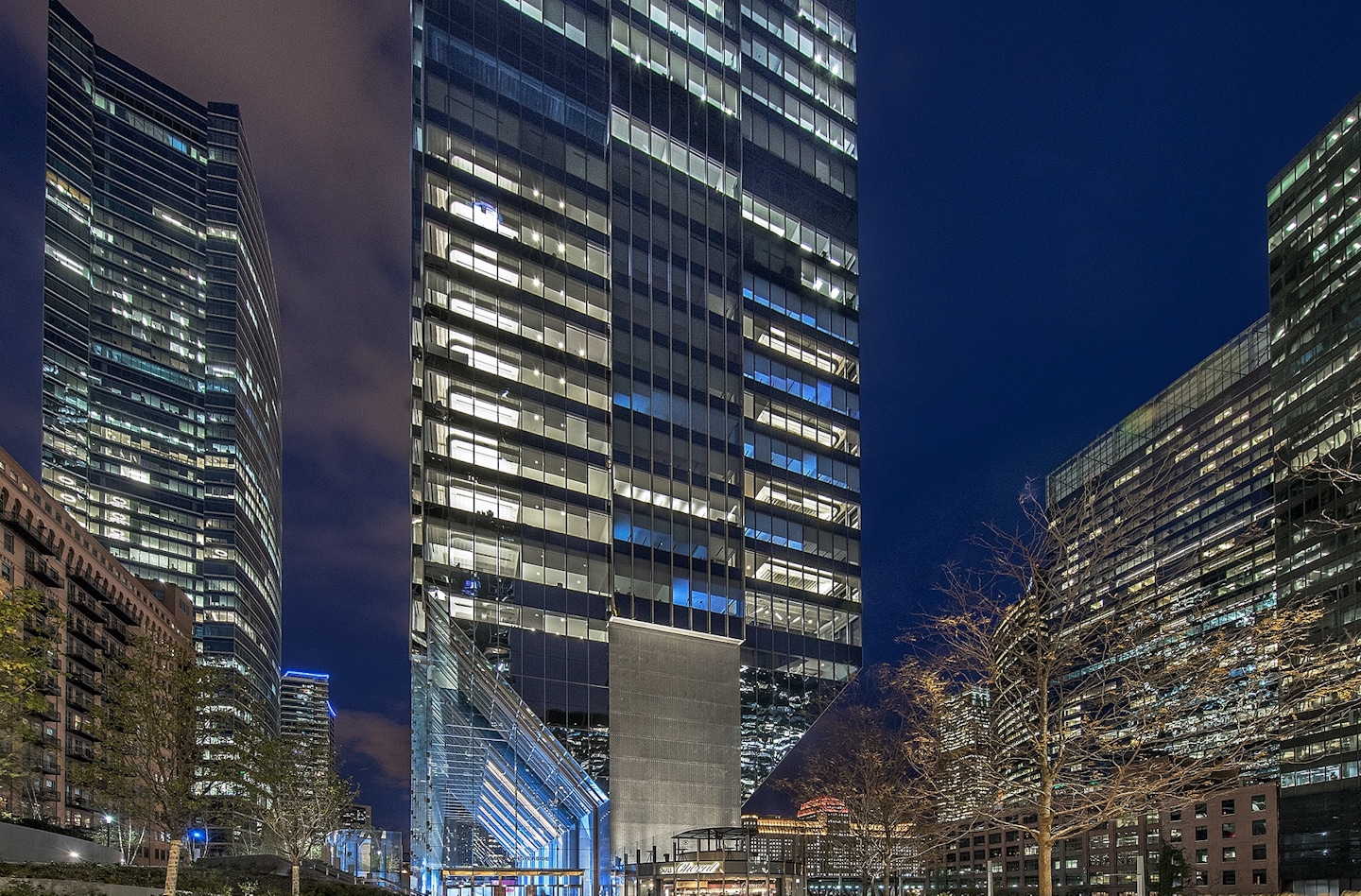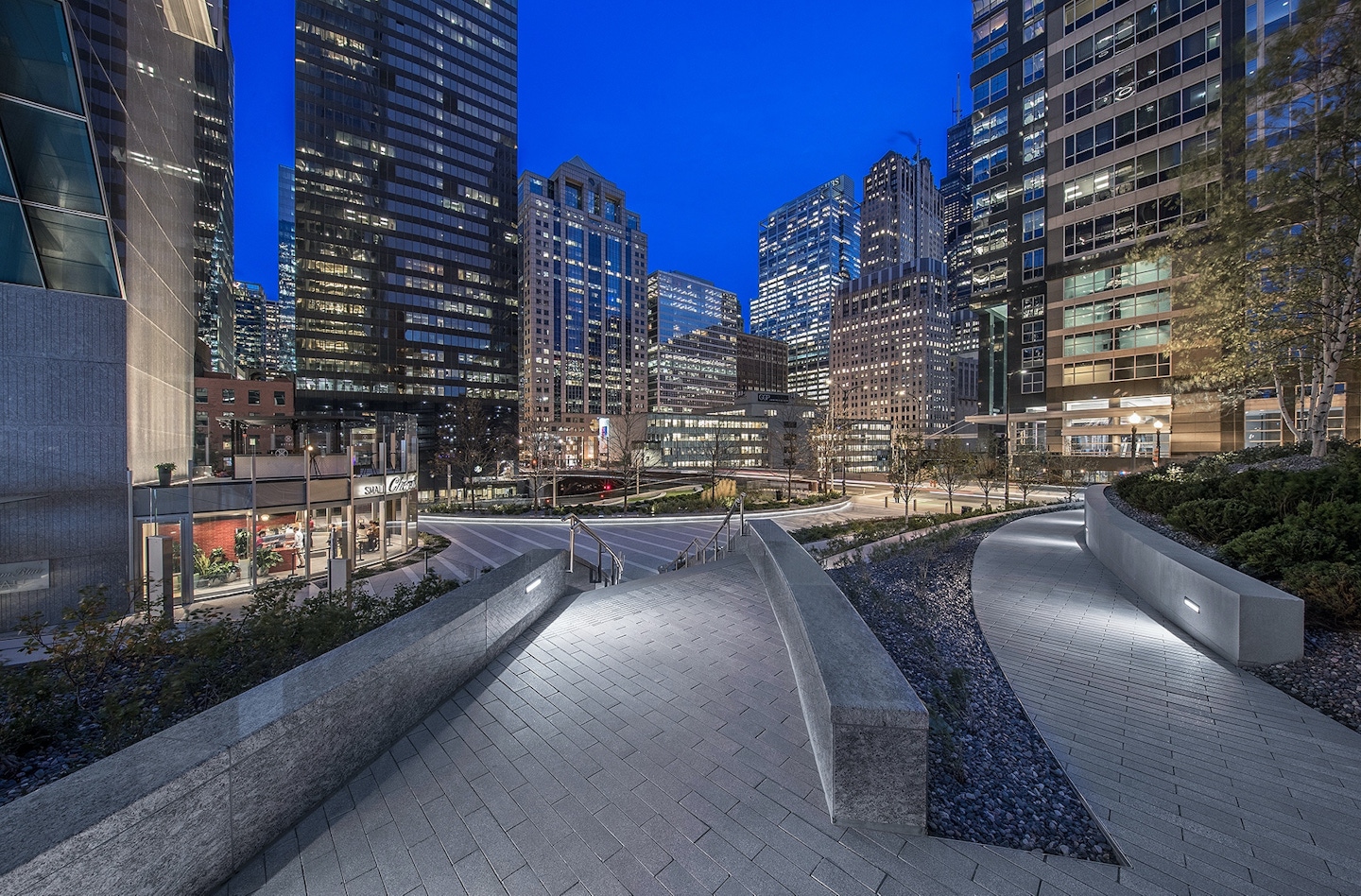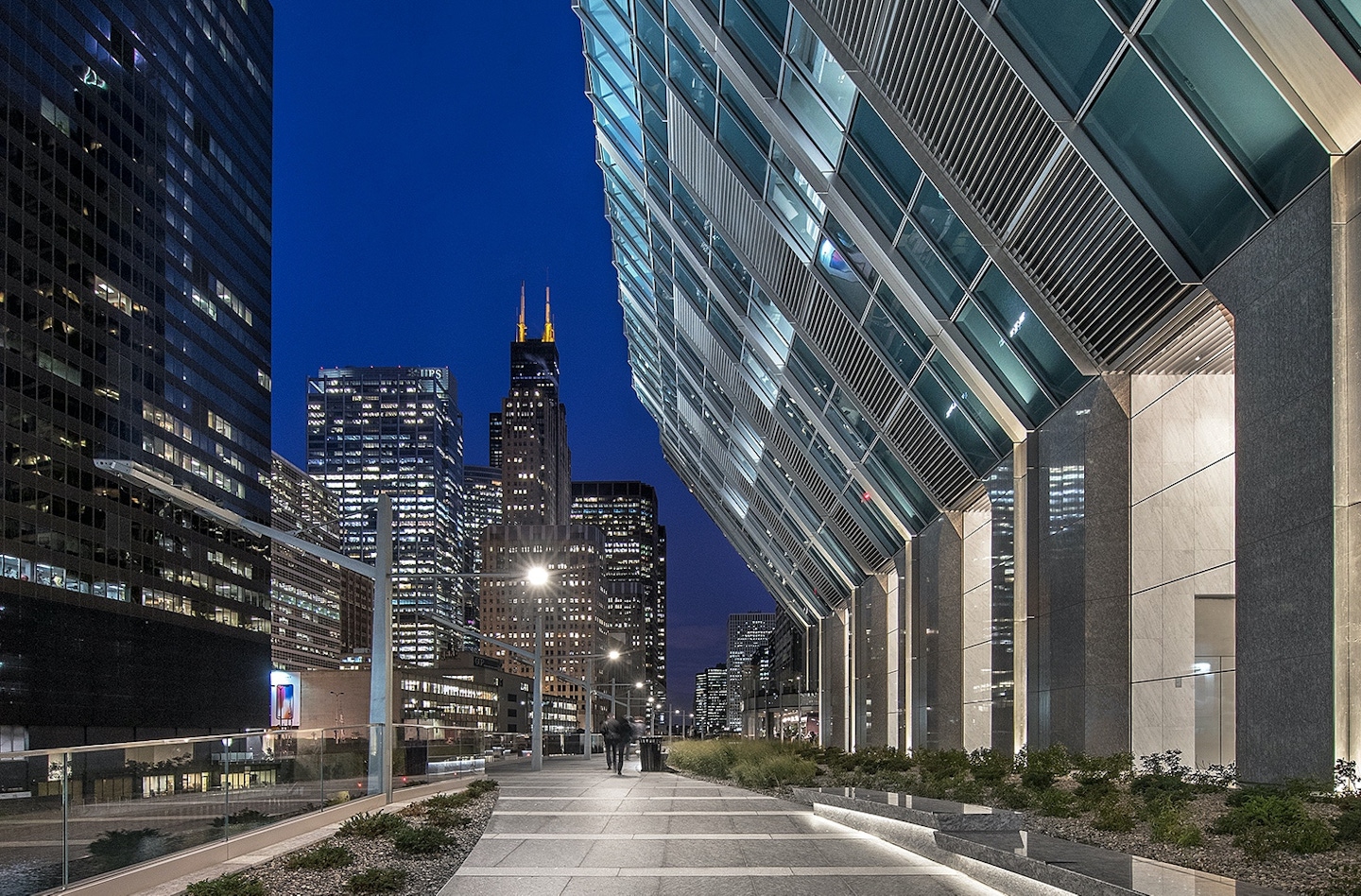Site Constraints
Epstein provided civil engineering services to Riverside Investment and Development (Formerly O'Donnell Investment Company) for a new 54-story commercial high-rise building located at 150 N. Riverside in Chicago, IL. The project featured construction over the Amtrak rail lines, reconstruction of the existing river wall, and modification to the Lake Street and Randolph Street bridge structures for access and pedestrian crosswalk signals. Amenities included a parking garage, extension of the elevated river walk to Lake Street, restaurant, conference center, and a 1.5 acres of public plaza and park area.
The parcel is located near the confluence of the three branches of the Chicago River was more challenging than a typical high-rise tower site. Only the building core could touch down onto the tiny ½ acre parcel in order to fit between Amtrak tracks to the west and the Chicago River to the east. A public plaza was created from an overbuild over the Amtrak tracks at the level of the two roadway viaducts north and south. What used to be an inaccessible gravel covered site with 100% runoff was transformed into a public plaza with 56% landscaped area. Stormwater from the overbuild plaza and the building green roof is routed by pipe to the east edge of the site where it is filtered before discharging into the Chicago River.
Lacking any utilities and with a maximum width of only 85, the project required creative solutions by the civil engineering team. Challenges to the on-site improvements included the tight clearance requirements over the Amtrak rail lines that required a creative approach to routing the overhead sanitary sewer service. Epstein designed the sanitary service to be hung from the Lake Street bridge structure across the entire width of the Amtrak right-of-way, thus avoiding the need to jack and bore under the tracks and avoiding the need for a lift station, saving schedule and cost to the project.
The design team, client and contractor worked closely with the Chicago Department of Water Management (CDWM) and Amtrak for their approval during the design and installation of the water services. The only allowable option by the CDWM for the water services was between an existing Amtrak rail line and the existing Randolph Street bridge house. Once the earth retention system was designed between the existing tracks and building, the space left over to fit utilities was approximately 7 wide. Within this space there needed to be room for 2-12 water services, three specially sized valve basins, and 2-14 chilled water pipes. Pipes in some areas needed to be stacked to make everything fit.
Maintaining the construction schedule was critical to the project. Epstein was responsible for obtaining permits and approvals from public agencies such as the Office of Underground Coordination, Chicago Department of Transportation, Chicago Department of Water Management, Chicago Building Department, the Illinois Environmental Protection Agency, the Illinois Historic Preservation District, the U.S. Fish and Wildlife Service, the Metropolitan Water Reclamation District, the City of Chicago Fire Department and Amtrak.






